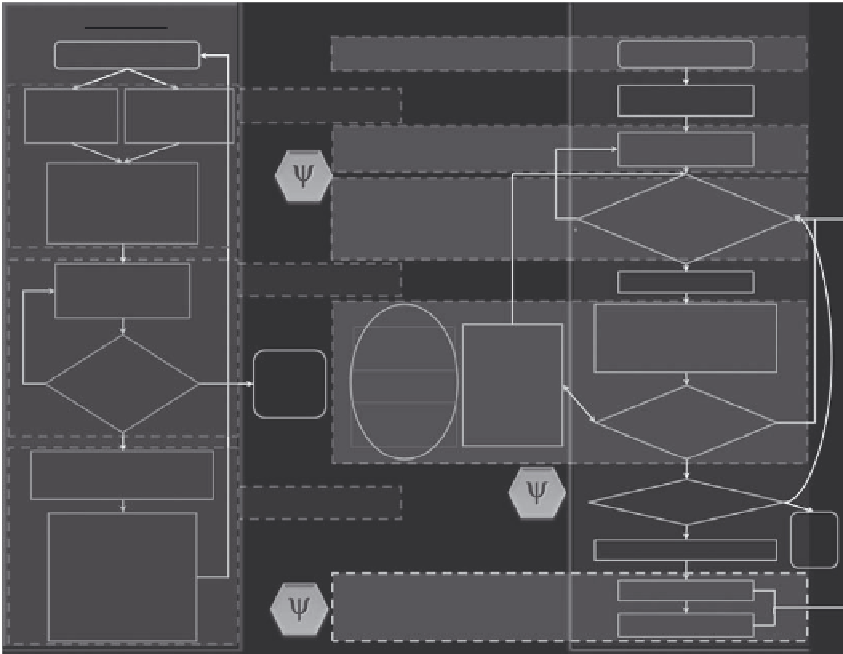Biomedical Engineering Reference
In-Depth Information
AT assessment components
User's actions
Center for technical aid
START
User/client REQUEST
ICF factors (user request)
Request to
solve activity
limitations
Request to solve
environmental
restrictions
Contact
User's seeking solution
Clinical measures, functional
analysis, and psycho-socio-
environmental evaluations
User data collecting
Providing, history
(medical, rehabilitation,
support use) and
psycho-socio-
environmental data
1
Multidisciplinary
team meeting for:
-user data valuation and
-setting design
Data elaboration
NOT
User subjective
evaluation of
technological aids
User's checking solution
Setting set-up
Matching process:
- assistive solution
proposal
- assistive solution
user-trial
- assistive solution
outcome
Environmental
assessment
process
(
see the usability
and accessibility
evaluation
diagram
)
Te chnological
aid selection
User
evaluation of
assistive
solution
Temporary
or
permanent
EXIT
NOT
NOT
Assistive solution
Multidisciplinary
team evaluation
Environmental
evaluations
NOT
Assistive solution obtained:
public health system or
public/private insurance
2
User
agreement
User's living solution
NOT
NOT
Short/Long-term use
-Effectiveness
-E
‰
ciency
-Usability
-Personal, emotional,
social, comfort with use
-Subjective well-being
-Benefit
EXIT
Assistive solution provision
Personal well-being, user
satisfaction, and benefit
from use
User support
3
Follow up
FIgUre 10.19
The ATA process.
On the other side, the optometrist must be competent in the existing assistive
Sttechnologies that allow him/her to formulate their alternative hypothesis to those that
have to be tested by the ATA team.
The information provided should be related to a real environment and should not be
limited to a list of numerical data that are scientifically irreproachable but difficult to inter-
pret and to use.
That is why it is less useful to state that a patient has a visual ability of 1/10 at 50 cm
instead of communicating that a patient is able to recognize objects, symbols, and letters at
a 50-cm distance and can differentiate details of 7-mm size.
The indications concerning the width of the saccadic movements or of the pursuit,
in which a sufficient performance is held, must be provided in reference to a monitor's
dimensions, instead of to an angular width.
The speed needed to make a pursuit movement without any losses of fixation should
be binding a key element to consider in determining the velocity of the movement of the
mouse cursor.
The stability of the fixation and the quality of the saccadic movement will be critical
in determining effective interfaces when a software or printed texts and tabs are used
(Orlandi 2003).




